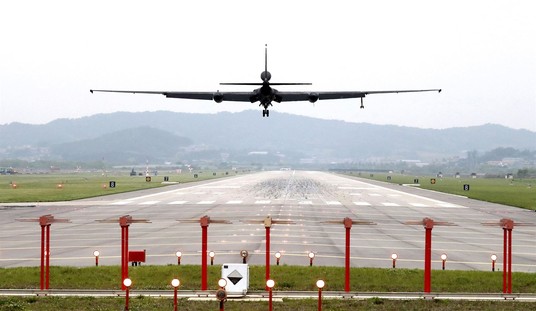Protests in Iran are ongoing, despite claims from authorities that the demonstrations have ended. But with 90 percent of the internet offline in Iran, it’s very difficult to say exactly what’s been happening.
The Iranian government switched off internet access to a vast majority of the country after the protests turned violent last week. For almost a week, 95 percent of the country was disconnected and unable to access social media sites. In the last 24 hours, access was being slowly restored but is still only at 10 percent.
The AP says Iran is the first nation where a net outage by government isolated an entire country.
The shutdown across a nation of 80 million people was the first to effectively isolate a modern, highly developed domestic network, experts say. That makes it a milestone in efforts by authoritarian governments to censor online communications.
Other governments — such as Ethiopia’s — have imposed longer internet shutdowns. And Russia is exerting more central control over its internet. But nothing to date equals Iran’s shutdown in logistical complexity, the experts say.
“There is a desperate move to control all information in the country and to ensure that the government has a monopoly on information,” said Adrian Shahbaz, research director for technology and democracy at Freedom House, a watchdog group.
The government’s ability to bring the net down came about largely as a result of U.S. sanctions. Tehran urged its citizens to use its state-owned infrastructure.
1/4. For the past 8 years Iran was pushing and encouraging users and business to use national infrastructure. Believe me, none of them really wanted to use this infrastructure, however since U.S. lunched it's "maximum pressure" program,
— AmiR Rashidi (@Ammir) November 18, 2019
2/4. every single important internet infrastructure, like cloud services such as @awscloud , @googlecloud and @digitalocean started to ban Iranians to use them just because of U.S. tech sanctions. At the end of the day , there was no solution and all of them FORCED to move
— AmiR Rashidi (@Ammir) November 18, 2019
Big tech companies, apparently fearing retaliation from government, have been denying ordinary Iranians access.
“We’ve seen an overcompliance with US sanctions by US tech companies. Google Cloud Services, Amazon Web Services, platforms that many Iranians use to access private virtual networks to circumvent filtering in Iran, in recent months, these companies have banned Iranians from their services directly citing US sanctions.”
Nat Friedman, CEO of GitHub, wrote on Twitter in July: “It is painful for me to hear how trade restrictions have hurt people… to comply with US sanctions, we, unfortunately, had to implement new restrictions on private and paid accounts in Iran, Syria, and Crimea.’’
Amongst many others like Slack, these platforms have been forced to migrate off of these services onto Iran’s NIN, Toossi told Euronews: “This has allowed the Iranian government to be remarkably successful” in restricting internet access to a lot of ordinary users.”
Rashidi concludes: “These sanctions were the biggest gift anyone could give the Iranian government.”
Well, the reason Iranians are pouring into the streets to protest is that the U.S. sanctions have destroyed the economy. Not much of a “gift.”
Regardless, you have to think that other oppressive governments around the world are paying close attention to the success — or not — of Iran’s efforts to kill the internet. The few social media videos that are still filtering out show that the protests are continuing. And the murdering of at least 100 Iranians and arresting thousands doesn’t seem to have dampened the Iranians’ anger at the government. While the same internet conditions may not exist in many of those authoritarian countries, Iran’s example might be a textbook case to be studied and copied by governments the world over.










Join the conversation as a VIP Member